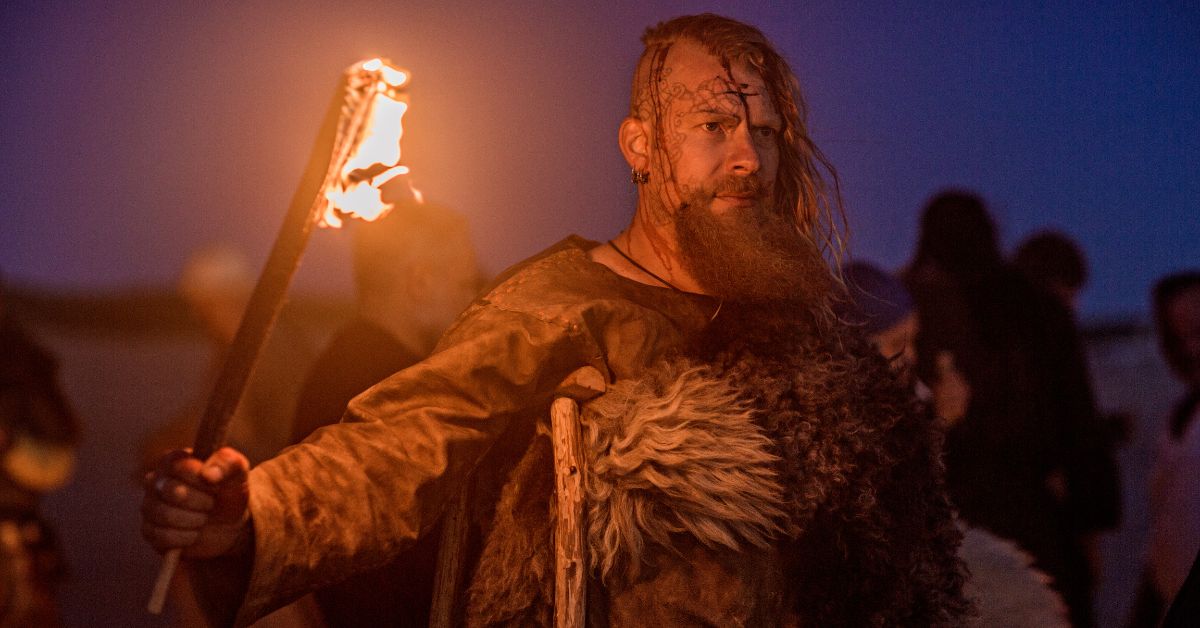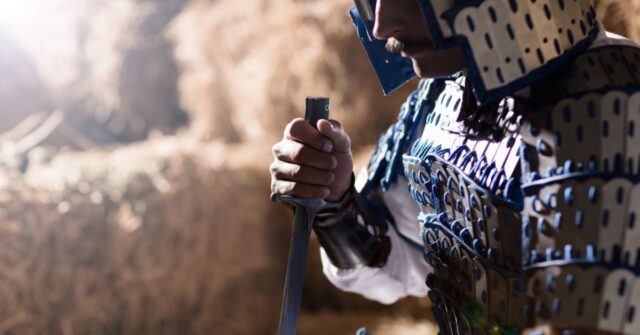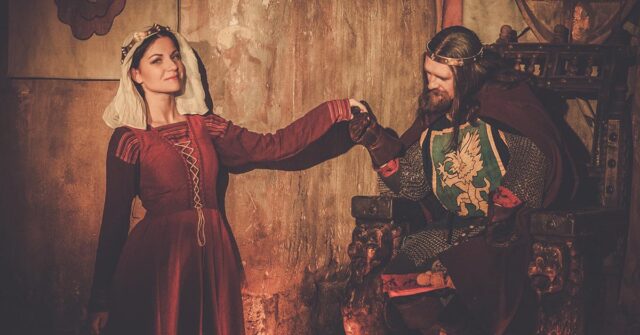The Viking Age was marked by a series of intense battles and strategic sieges that showcased the Vikings’ prowess in warfare.
This period, spanning from the late 8th century to the early 11th century, saw Norse warriors travel vast distances, raiding and settling across Europe.
Their legendary battles have left an indelible mark on history.
Introduction to Viking Warfare
Viking warfare is renowned for its ferocity and tactical ingenuity. The Vikings, hailing from Scandinavia, were exceptional warriors, seafarers, and strategists.
Their ability to adapt to different combat situations and their relentless pursuit of victory made them formidable opponents.
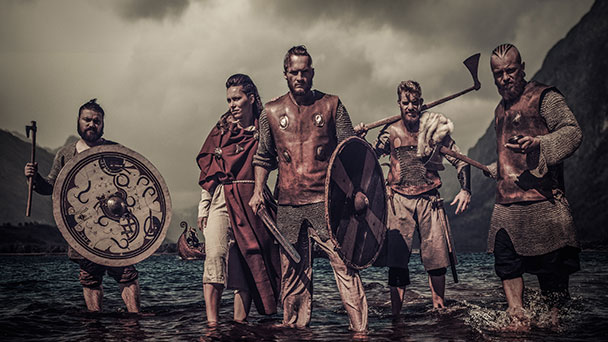

The Viking Age: An Overview
The Viking Age began around 793 AD with the infamous raid on Lindisfarne and lasted until approximately 1066 AD, ending with the Battle of Stamford Bridge.
This era was characterized by the Vikings’ exploration, trade, and fierce combat tactics that struck fear into the hearts of many European communities.
Key Characteristics of Viking Warfare
Viking warfare was defined by its speed, surprise, and brutality. The Vikings excelled in hit-and-run tactics, often using their longships to strike quickly and retreat before larger forces could mobilize.
They were adept at both land and sea battles, utilizing their knowledge of terrain and weather to their advantage.
The Importance of Battles and Sieges in Viking Expansion
Battles and sieges were crucial to Viking expansion. They enabled the Vikings to secure resources, land, and slaves, which were vital for their economy and social structure.
These conflicts also facilitated their settlement in new territories, spreading Norse culture and influence across Europe.
Early Viking Raids and Conquests
In the early stages of their expansion, the Vikings relied heavily on swift, brutal raids to achieve their goals.
These raids not only brought wealth and resources but also established their fearsome reputation across Europe.
The Battle of Lindisfarne (793)
The raid on Lindisfarne is often cited as the beginning of the Viking Age. This attack on a monastery in Northumbria was brutal and unexpected, setting the tone for future Viking raids.
The monastery’s riches were plundered, and the incident was widely reported, spreading fear throughout Europe.
The Siege of Paris (845)
In 845, the Viking chieftain Ragnar Lothbrok led a fleet of 120 ships up the Seine River to Paris. The siege was successful due to the element of surprise and the use of intimidation.
The Frankish king, Charles the Bald, was forced to pay a large ransom to save the city, highlighting the Vikings’ ability to leverage their fearsome reputation for financial gain.
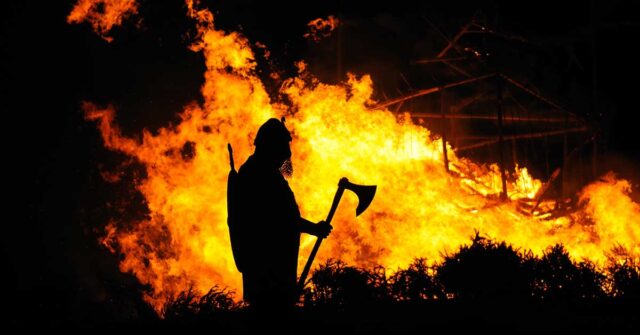

Major Battles and Sieges of the Viking Age
Throughout the Viking Age, numerous battles and sieges shaped the course of European history.
These conflicts demonstrated the Vikings’ tactical brilliance and their ability to adapt to different combat scenarios.
The Battle of Brunanburh (937)
The Battle of Brunanburh was a pivotal clash between the Anglo-Saxon forces led by King Aethelstan and a coalition of Vikings, Scots, and Strathclyde Britons.
This battle was fought to determine control over England.
Background and Context
The Battle of Brunanburh took place in 937 and was a decisive conflict for the control of England. Aethelstan, the Anglo-Saxon king, faced a coalition of forces including Vikings led by Olaf Guthfrithson, Scots, and Strathclyde Britons.
Key Figures: Aethelstan and Olaf Guthfrithson
King Aethelstan, known for his strategic acumen, led the Anglo-Saxon forces. Opposing him was Olaf Guthfrithson, a formidable Viking leader who sought to challenge Aethelstan’s rule and reclaim lost territories.
Battle Strategies and Tactics
The battle strategies employed were intricate and brutal. Aethelstan’s forces utilized superior organization and discipline, while the coalition relied on sheer numbers and ferocity.
The battle was intense, with heavy casualties on both sides.
Outcome and Historical Significance
The victory at Brunanburh solidified Aethelstan’s rule and is often considered a defining moment in the unification of England.
It demonstrated the Anglo-Saxons’ resilience and the limitations of Viking expansion.
The Battle of Maldon (991)
The Battle of Maldon was fought between the Saxons and Viking raiders. Despite being heavily outnumbered, the Saxons, led by Ealdorman Byrhtnoth, decided to engage the Viking forces.
Background and Context
The battle occurred on August 11, 991, near the town of Maldon in Essex. It was part of a series of Viking incursions into England, aiming to extract wealth and resources through force.
Key Figures: Byrhtnoth and Olaf Tryggvason
Byrhtnoth, the Saxon commander, is celebrated for his bravery and tragic heroism. Olaf Tryggvason, the Viking leader, was a renowned warrior who later became King of Norway.
Battle Strategies and Tactics
Byrhtnoth’s decision to fight despite the odds is often seen as both courageous and reckless. The Saxons were ultimately overwhelmed by the Viking forces, leading to a decisive Viking victory.
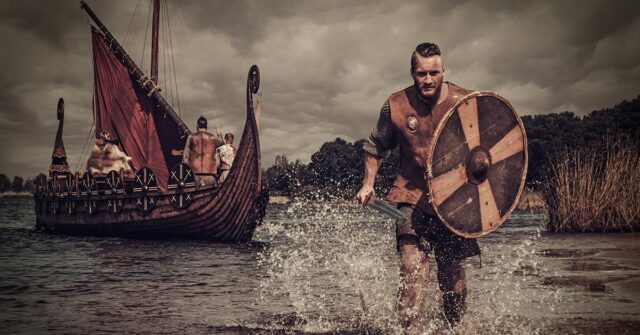

Outcome and Historical Significance
The defeat at Maldon highlighted the vulnerability of Anglo-Saxon England to Viking raids.
It led to the controversial decision by King Aethelred to pay the Vikings a large sum of silver as tribute, hoping to prevent further attacks.
The Battle of Clontarf (1014)
The Battle of Clontarf was a significant conflict between the forces of Brian Boru, High King of Ireland, and a Norse-Irish alliance. This battle had far-reaching implications for the power dynamics in Ireland.
Background and Context
The battle took place on April 23, 1014, near Dublin, at the River Tolka. It was part of Brian Boru’s efforts to consolidate his power and curb Viking influence in Ireland.
Key Figures: Brian Boru and Sigtrygg Silkbeard
Brian Boru was a legendary figure in Irish history, known for his efforts to unite Ireland. Sigtrygg Silkbeard, the Norse King of Dublin, opposed him, seeking to maintain Norse control in the region.
Battle Strategies and Tactics
The battle was fiercely fought, with both sides displaying remarkable bravery. Brian Boru’s forces eventually emerged victorious but at a great cost, including the death of Brian Boru himself.
Outcome and Historical Significance
The victory at Clontarf marked the decline of Viking power in Ireland. It symbolized Irish resistance and is celebrated as a pivotal moment in Irish history.
The Battle of Assandun (1016)
The Battle of Assandun was a critical conflict between the English army and the Danish forces led by Cnut the Great. This battle played a crucial role in shaping the future of England.
Background and Context
The battle occurred on October 18, 1016, in Essex. It was part of the struggle for control of England between the Anglo-Saxons and the Danish invaders.
Key Figures: Edmund Ironside and Cnut the Great
Edmund Ironside, the English king, was known for his tenacity and bravery. Cnut the Great, the Danish leader, sought to establish his dominion over England.
Battle Strategies and Tactics
The battle was fiercely contested, with both sides employing various strategies to gain the upper hand. Ultimately, Cnut’s forces prevailed, leading to a significant shift in power.
Outcome and Historical Significance
The defeat of Edmund Ironside resulted in the Treaty of Olney, dividing England between Cnut and Edmund. This marked the beginning of Danish rule in much of England.
The Battle of Stamford Bridge (1066)
The Battle of Stamford Bridge marked the end of the Viking Age. This battle saw the forces of King Harold II of England clash with the Viking army led by King Harald Hardrada of Norway.
Background and Context
The battle took place on September 25, 1066, near York. It was a result of Harald Hardrada’s attempt to claim the English throne.
Key Figures: Harold Godwinson and Harald Hardrada
Harold Godwinson, the last Anglo-Saxon king of England, faced Harald Hardrada, a legendary Viking warrior seeking to expand his influence.
Battle Strategies and Tactics
The battle was brutal and decisive. Harold’s forces managed to surprise the Viking army, leading to a significant English victory and the death of Harald Hardrada and many of his warriors.
This victory for the English was short-lived, however, as just weeks later, Harold Godwinson faced another invasion by William the Conqueror at the Battle of Hastings, ultimately leading to the Norman Conquest of England.
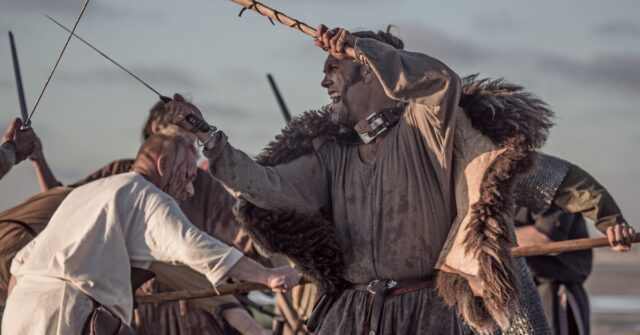

Iconic Viking Sieges
The Viking Age saw numerous sieges that demonstrated their strategic brilliance and relentless determination.
These sieges often involved prolonged engagements and showcased the Vikings’ ability to adapt to various defensive structures and tactics.
The Siege of Paris (885-886)
The Siege of Paris in 885-886 was a landmark event in Viking history.
Led by Viking chieftains Rollo and Sigfred, the siege showcased the Norsemen’s ability to conduct extended military operations far from their homeland.
Background and Context
The siege began in November 885, with Viking forces advancing toward Paris after capturing Rouen. The city’s strategic location on the Seine River made it a prime target for Viking expansion.
Key Figures: Count Odo, Bishop Gauzlin, and Rollo
Count Odo of Paris and Bishop Gauzlin led the city’s defense. Their leadership and tactical decisions were crucial in withstanding the prolonged siege.
Rollo, a prominent Viking leader, played a key role in directing the Viking forces.
Siege Strategies and Tactics
The Vikings employed a combination of direct assaults and strategic blockades. They attempted to breach the city’s defenses through a series of attacks on the fortified bridges.
The defenders, despite being outnumbered, utilized the city’s fortifications and launched counterattacks to repel the invaders.
Outcome and Historical Significance
The siege ended with a negotiated settlement, where the Vikings were paid a substantial tribute to withdraw.
This event highlighted the Vikings’ ability to exert pressure on major European powers and the willingness of those powers to negotiate with them.
The Siege of Constantinople (860)
The Siege of Constantinople in 860 was a notable event where the Vikings, known as the Rus, attacked the Byzantine capital. This siege underscored the reach and ambition of Viking raiders.
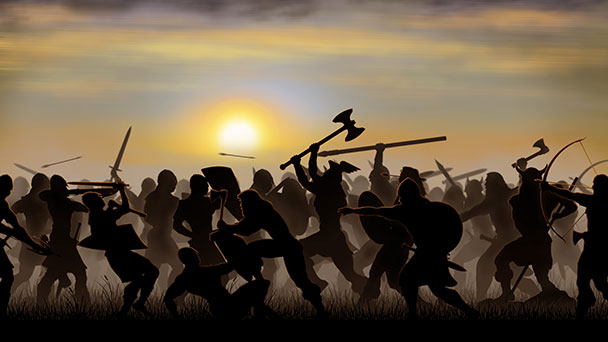

Background and Context
In 860, a fleet of Viking ships sailed down the Dnieper River and attacked Constantinople. The Byzantine Empire was caught off guard, as their main forces were engaged elsewhere.
Key Figures: Bjorn Ironside and Hastein
Bjorn Ironside and Hastein, two legendary Viking leaders, led the raid. Their tactics and boldness in attacking one of the most fortified cities of the time were remarkable.
Siege Strategies and Tactics
The Vikings employed swift and fierce attacks, leveraging their naval prowess. They aimed to overwhelm the city’s defenses through surprise and sheer force.
Outcome and Historical Significance
Although the siege did not result in the capture of Constantinople, it demonstrated the Vikings’ far-reaching influence and their capability to threaten even the most powerful empires.
The Siege of York (866)
The Siege of York in 866 was a critical moment in the Viking invasions of England. It marked the establishment of Viking control over a major Anglo-Saxon city.
Background and Context
The siege occurred during the Great Heathen Army’s campaign in England. York, a key city in Northumbria, was a strategic target for the Vikings.
Key Figures: Ivar the Boneless and King Aella
Ivar the Boneless, a fearsome Viking leader, orchestrated the siege. King Aella of Northumbria defended the city, ultimately facing a brutal defeat.
Siege Strategies and Tactics
The Vikings utilized their knowledge of siegecraft and their ferocity in battle to breach York’s defenses. The city’s defenders were unprepared for the Vikings’ relentless assault.
Outcome and Historical Significance
York’s capture solidified Viking control in Northumbria and demonstrated their ability to conquer and hold significant urban centers in England.
Tactics and Weaponry in Viking Battles
Viking warfare was characterized by innovative tactics and a wide array of weaponry, which played crucial roles in their numerous victories and occasional defeats.
Common Viking Battle Tactics
The Vikings were masters of surprise attacks, often using their longships to launch raids swiftly.
They employed shield walls, a tactic where warriors interlocked their shields to create a formidable barrier, in open battle.
Their ability to adapt to different combat situations made them versatile opponents.
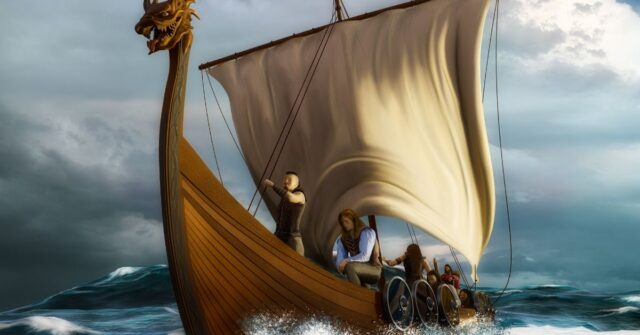

Siege Techniques and Innovations
During sieges, Vikings used various techniques such as constructing siege engines, digging tunnels, and launching projectiles to breach fortifications.
Their persistence and resourcefulness were key factors in their success in prolonged engagements.
Weaponry and Armor of Viking Warriors
Viking warriors were equipped with a range of weapons, including swords, axes, spears, and bows. Their armor typically consisted of chainmail, helmets, and wooden shields.
The craftsmanship of Viking weaponry was highly regarded and contributed to their effectiveness in battle.
The Legacy of Viking Battles and Sieges
The impact of Viking battles and sieges extends far beyond their immediate outcomes. These events shaped the course of European history and left a lasting legacy.
Impact on European History
Viking incursions led to significant political and cultural changes across Europe. They influenced the development of medieval kingdoms, trade routes, and even legal systems.
The integration of Viking settlers into local populations also contributed to the cultural and genetic makeup of modern Europe.
Viking Battles in Modern Culture and Media
Viking battles and their legendary warriors have captivated modern imagination.
They are frequently depicted in books, movies, and television shows, often romanticizing their exploits and highlighting their adventurous spirit.
This enduring fascination underscores the Vikings’ lasting influence on contemporary culture.
Lessons Learned from Viking Warfare
The study of Viking warfare provides valuable insights into the importance of strategy, adaptability, and resilience in combat.
The Vikings’ ability to innovate and their relentless pursuit of their goals offer timeless lessons for both military and civilian contexts.
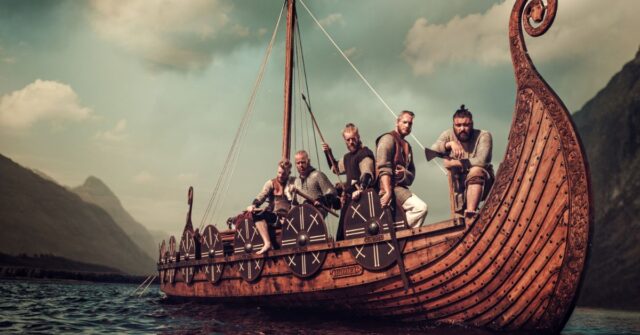

Conclusion
The Viking Age was a period of extraordinary conflict and conquest. The famed battles and sieges of this era demonstrate the Vikings’ formidable capabilities and their profound impact on European history.
Through understanding these events, we gain a deeper appreciation for the complexity and legacy of Viking warfare.
Summary of Key Points
This article has explored the most significant battles and sieges of the Viking Age, detailing the strategies, key figures, and outcomes that defined these conflicts.
Each battle and siege highlighted the Vikings’ tactical brilliance and their enduring influence on history.
The Enduring Legacy of Viking Warriors
The legacy of Viking warriors continues to inspire and fascinate. Their stories of bravery, strategy, and conquest remain relevant, reminding us of the remarkable capabilities of these legendary Norsemen.
As we reflect on their history, we acknowledge the lasting impact they have had on our world.

